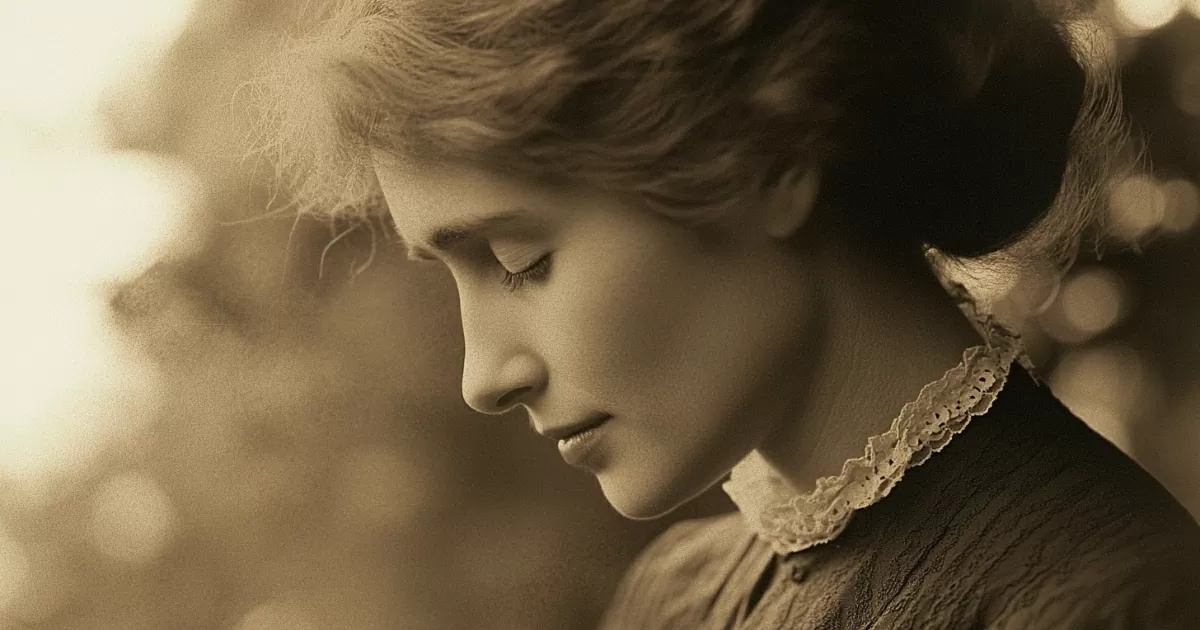“The highest result of education is tolerance.”
These words belong to Helen Keller, a woman who inspired hope and courage in people worldwide from the late 19th to early 20th century. Despite losing her sight and hearing at 19 months old, Helen Keller achieved remarkable success through extraordinary effort and innovative educational methods, becoming a world-renowned writer and social activist.
Helen Keller mastered seven languages, published numerous books, and gave lectures in over 25 countries. Her life became a symbol of human potential overcoming disability. She also said:
“The best and most beautiful things in the world cannot be seen or even touched – they must be felt with the heart.”
This quote embodies her life philosophy. Despite losing her sight and hearing, Helen Keller sensed the world with her heart, putting her experiences into words that influenced many. Her learning journey opened up new possibilities not only for people with disabilities but for everyone.
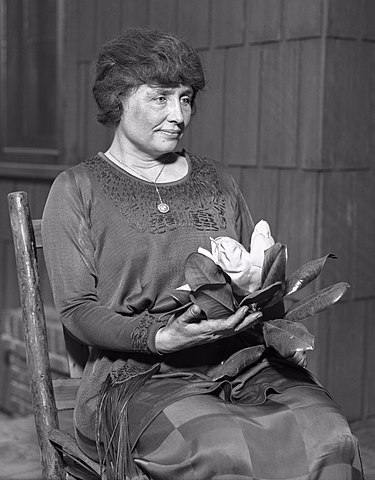
Helen Keller. Her eyes reflect strong will and intelligence. By Los Angeles Times; restored by User:Rhododendrites – Los Angeles Times photographic archive, UCLA Library, CC BY 4.0, Link
In this article, we will focus on the tactile learning materials that made Helen Keller’s extraordinary achievements possible, exploring her educational methods in detail. How was her unique learning method, which could be called a “fingertip library,” formed, and what impact did it have on the world?
Helen Keller’s Early Life
Helen Keller was born on June 27, 1880, in Tuscumbia, Alabama, United States. At 19 months old, she lost her sight and hearing due to acute gastritis and brain fever. Young Helen struggled in isolation and darkness, unable to communicate with those around her.
However, Helen’s life changed dramatically in March 1887 when she met her teacher, Anne Sullivan. Sullivan used unique teaching methods to help Helen understand words and concepts through touch.
Meeting Anne Sullivan and the Beginning of Education
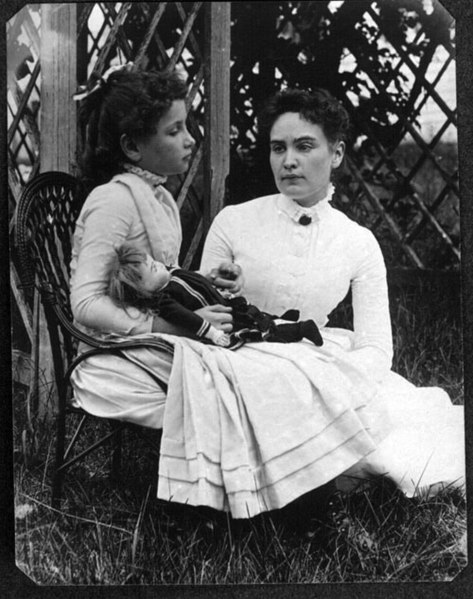
Anne Sullivan (right) teaching Helen Keller (left). Photographed in July 1888.
Anne Sullivan was a 24-year-old teacher who had graduated from the Perkins School for the Blind. Having experienced visual impairment herself, she had deep empathy and passion for Helen’s education.
The first word Sullivan taught Helen was “doll.” She spelled “d-o-l-l” in finger spelling on Helen’s palm while letting her touch a doll. At first, Helen couldn’t understand the meaning of this action, but through Sullivan’s persistent guidance, she gradually began to understand the connection between spellings and objects.
The breakthrough came when Sullivan taught Helen the word “w-a-t-e-r” while letting her touch water from a well. At this moment, Helen understood the true meaning of words for the first time, opening the door to further learning.
Tactile Learning Materials
In Helen Keller’s education, touch was the most important sense. Teacher Sullivan used various tactile materials to support Helen’s learning.
Braille
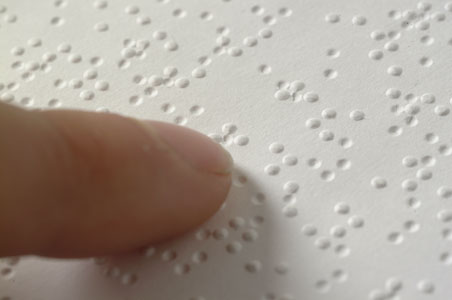
Braille that Helen Keller mastered. Reading letters through touch. Lrcg2012, CC BY-SA 3.0, via Wikimedia Commons
Braille played a central role in Helen’s education. This tactile writing system, developed by Louis Braille, opened up the world of reading and writing for Helen. She learned Braille at an astonishing speed and eventually became able to read and write in multiple languages using it.
Three-Dimensional Models
Three-dimensional models were used for learning geography and science. For example, a tactile globe was used to understand the shape of the Earth and the arrangement of continents. Anatomical models were also used to learn about the structure of the human body.
Tactile Maps
Helen learned geography using tactile maps. These maps had raised borders and topographical features, allowing her to understand geographical characteristics by touch.
Finger Spelling
The finger spelling that Sullivan first introduced became the foundation of communication with Helen. This method uses hand shapes corresponding to each letter of the alphabet to convey words. Helen mastered finger spelling at an incredible pace and eventually used it to understand even complex concepts.
Tactile Picture Books
Tactile picture books had raised outlines and important parts of images, allowing Helen to “see” by touching with her fingers. This helped her understand visual concepts.
Helen Keller’s Learning Process
Helen Keller’s learning process progressed with remarkable speed and depth.
Language Acquisition
Through education using finger spelling and touch, Helen rapidly expanded her vocabulary. Under Sullivan’s guidance, Helen learned hundreds of words in a few months and became able to construct simple sentences.
Passion for Reading
After mastering Braille, Helen immersed herself in reading. Through literature, she imaginatively explored worlds she couldn’t directly experience through sight or hearing. She read a wide range of genres, from classical literature like Shakespeare and Milton to works by contemporary authors.
Writing Activities
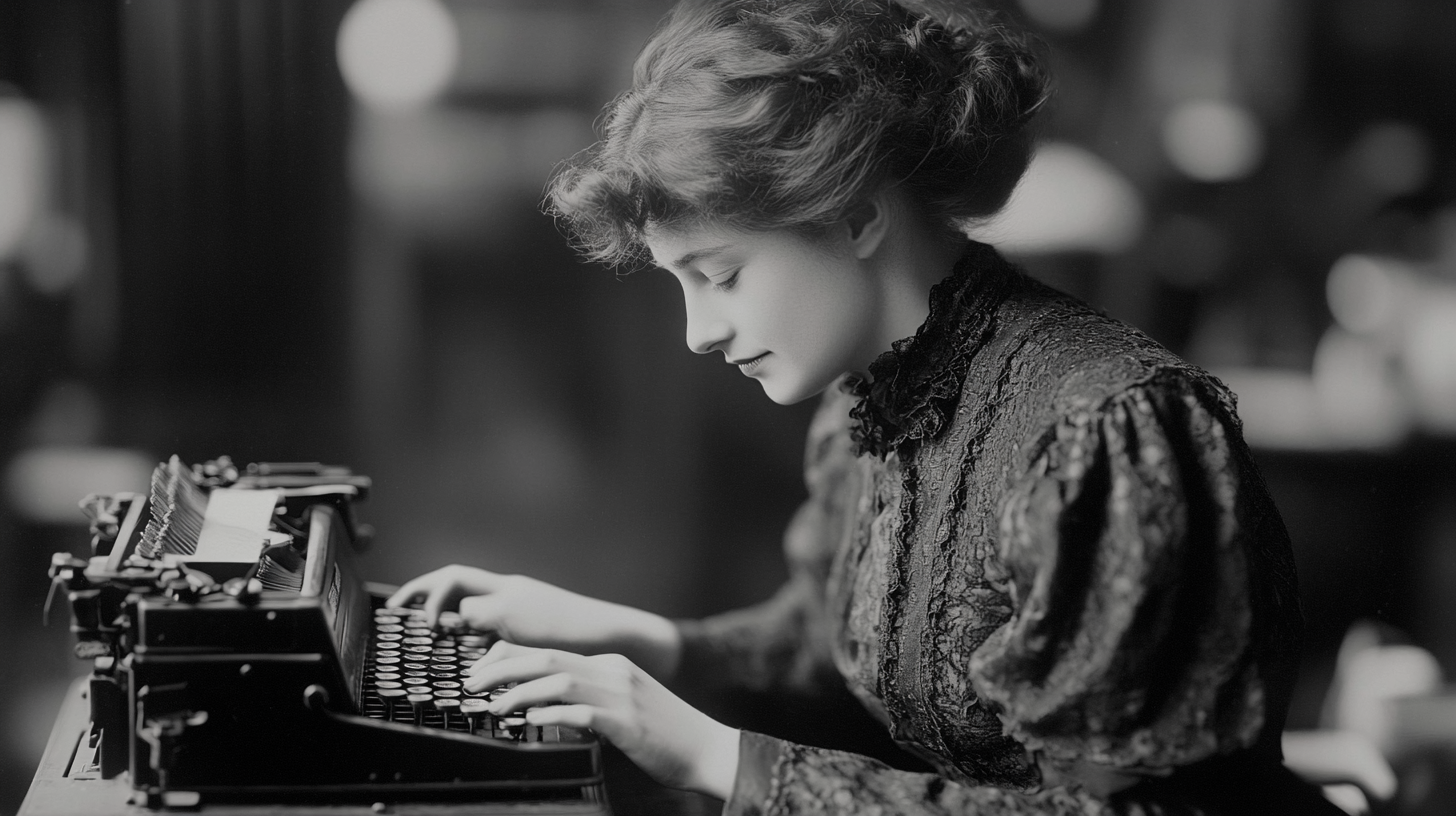
Helen Keller writing with a typewriter. Even after losing her sight and hearing, her thirst for knowledge never ceased. Generated by AI
Helen began writing in her teens. She initially used a Braille typewriter and later mastered a regular typewriter. Her first book, “The Story of My Life,” was published when she was 21 and was read worldwide.
Pursuit of Higher Education
Helen entered Radcliffe College (now Radcliffe Institute for Advanced Study at Harvard University) in 1900 and graduated with honors in 1904. This was a first for a deafblind person. At university, with Sullivan’s help, she studied philosophy, literature, history, and other subjects.
The State of Special Education at the Time
From the late 19th to early 20th century, education for people with disabilities was undergoing a major transition.
Establishment of Schools for the Blind
In America, the New England Asylum for the Blind (later Perkins School for the Blind) was established in 1829, pioneering education for the visually impaired. Anne Sullivan, Helen Keller’s educator, was also a graduate of this school.
Development of Deaf Education
Progress was also made in deaf education. The first school using American Sign Language (ASL) was established in 1817, leading to the wide recognition of sign language as a means of communication for deaf people.
Importance of Individualized Education
Helen Keller’s case demonstrated the importance of individualized educational approaches. Sullivan’s innovative teaching methods highlighted the need for tailored educational programs based on the degree and type of disability.
Helen Keller’s Contributions and Influence
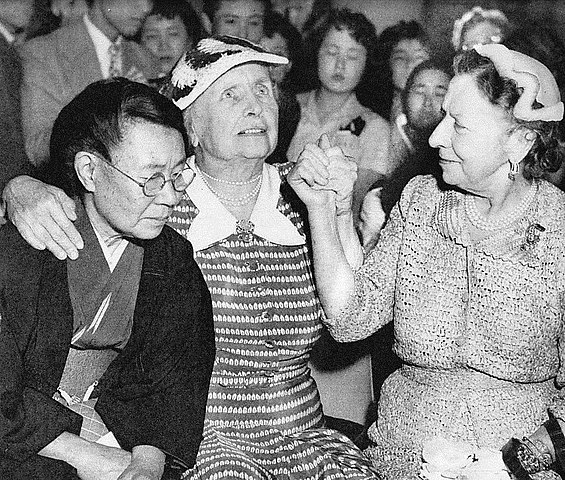
Helen Keller, age 75, visiting Japan in 1955. Her influence spread beyond borders. Throughout her life, she continued to advocate for the rights of people with disabilities and the importance of education.
Helen Keller’s learning and success had a significant impact on education for people with disabilities.
Recognition of Potential in People with Disabilities
Helen Keller’s success showed the world that people with severe disabilities have great potential. This increased social interest and investment in education for people with disabilities.
Recognition of the Importance of Tactile Education
Helen’s educational process demonstrated the effectiveness of learning methods utilizing touch. This led to the development and utilization of tactile materials in education for the visually impaired and deafblind.
Diversification of Communication Methods
The finger spelling and tactile communication methods used by Helen led to the diversification of communication methods for people with disabilities. This also influenced the later development of Augmentative and Alternative Communication (AAC).
Advocacy for Disability Rights
Based on her own experiences, Helen Keller advocated for the rights of people with disabilities. Her activities greatly contributed to expanding educational opportunities and promoting social participation for people with disabilities.
Impact on Modern Education for People with Disabilities
Helen Keller’s educational experiences continue to have a significant impact on modern education for people with disabilities.
Promotion of Inclusive Education
Helen Keller’s success demonstrated the importance of inclusive education where all children, regardless of disability, learn together. Currently, many countries are working towards realizing inclusive education.
Development of Assistive Technologies
The tactile learning materials used by Helen can be seen as the origin of modern assistive technologies. Today, more advanced assistive technologies such as Braille displays and screen readers have been developed to support the learning and daily lives of people with disabilities.
Adoption of Multi-Sensory Approaches
The multi-sensory approach centered on touch used in Helen’s education is also emphasized in modern special needs education. It is believed that more effective learning is possible by utilizing multiple senses, including vision, hearing, and touch.
Recognition of the Importance of Early Education
Helen Keller’s case demonstrated the importance of early educational intervention for children with disabilities. Currently, efforts are being made to establish systems for early detection of disabilities and early educational support.
Conclusion
Helen Keller’s “fingertip library” was not just an educational method. It was the key to overcoming barriers, understanding the world, and expressing oneself. Helen’s learning journey showed hope and possibilities not only to people with disabilities but to all people.
Helen Keller said: “Character cannot be developed in ease and quiet. Only through experience of trial and suffering can the soul be strengthened, ambition inspired, and success achieved.” These words embody her life itself.
The educational methods established by Helen Keller and Anne Sullivan have become the foundation of modern special needs education, enriching the lives of many people with disabilities. Their legacy continues to teach us about the power of education, human potential, and indomitable spirit.
What we can learn from Helen Keller’s life is the courage to overcome difficulties, the passion for learning, and the importance of empathy for others. Her way of life shows that it is possible to create a society where everyone, regardless of disability, can maximize their potential.
“One can never consent to creep when one feels an impulse to soar.” These words of Helen Keller teach each of us the importance of continuously growing beyond our own limits.
The dream that Helen Keller entrusted to us is the creation of a society where all people can receive equal education and have opportunities for self-realization. To realize this dream, each of us needs to consider what we should do and what we can do, and take action. Inheriting Helen Keller’s legacy and building a more inclusive and fair society – that is the challenge we face.
